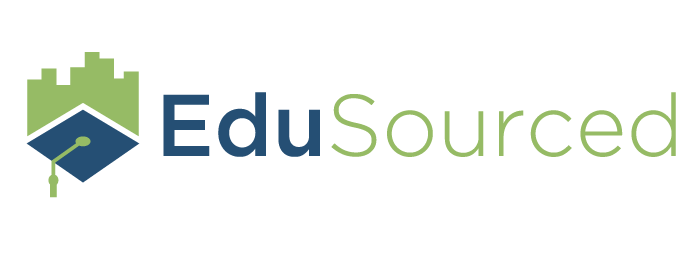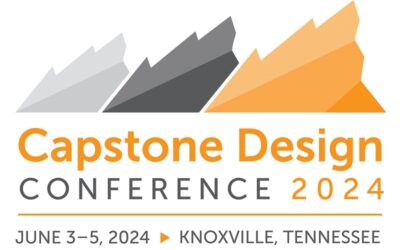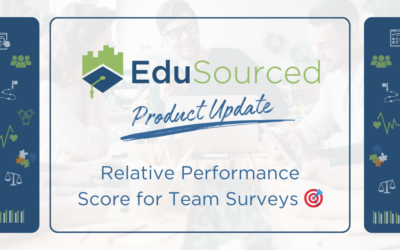
Experiential Learning BYU: A Rich History
Roger McCarty’s history with experiential learning extends back further than most: He was the Director of Experiential Learning for BYU from 2007 to 2017 and is now Director of Experiential at BYU Hawaii. We started EduSourced in 2014 and, at that time, the concept of organizing experiential as anything more than a series of siloed courses was nearly unheard of outside of a handful of top MBA programs. Yet by then Roger had already laid the groundwork for organizing experiential learning at the University level, something that remains uncommon even today.
Roger began using EduSourced at BYU Hawaii where we finally had our chance to pick his brain. Below is our Q&A.
Q: Can you provide an overview of your history with Experiential Learning at BYU?
Roger: I became involved in experiential learning when I was the learning and staffing director for the New Business Development function of The Dow Chemical Company. I designed and instructed a number of courses that relied heavily on experiential learning aides. This experience became a backbone of the courses I later developed at BYU. I retired from Dow Chemical as the Corporate Director of Strategy for all the divisions of Dow. Because I developed strategies across all of the divisions and markets that we served, I had a wide background on business, technology, markets, etc. that later helped me in managing projects around the world at BYU. After retiring at Dow, I became the Director of Experiential Learning for the Marriott Business School at BYU. My first responsibility was to manage the MBA Field Study program at BYU managing consulting projects with the MBA students. I later developed a complementary program called On campus Internships doing internship style projects for companies with teams of 5 students working a total of 40 hours together each week to complete the internship. We started with 5 teams of 5 students each doing projects for the pilot semester. We eventually worked up to more than 1,000 students per semester doing projects. We had students from 70 to 80 different majors each semester from all of the colleges of the campus.
We eventually worked up to more than 1,000 students per semester doing projects. We had students from 70 to 80 different majors each semester from all of the colleges of the campus.
After 10 years I retired from experiential learning BYU in Provo, and less than a your later I agreed to serve as a Missionary for the Church of Jesus Christ of Latter-Day Saints and part of my responsibilities was to start the On Campus Internship program at BYU Hawaii. My wife and I have been working on this for 2 years and will plan to help for one more school year in Hawaii.
Q: How is running experiential learning at a school with no surrounding business community different from urgan schools?
Roger: In an urban school setting you can ask speakers to come to campus and interact with the students on a regular basis. Also, there are many companies within 30 minutes to an hour of campus and so students can travel to those offices to work. Students can volunteer, work part time or complete internships while living in their apartments and even while attending classes. So, they can have 3 to 5 professional work experiences during their college years. But if you live in an isolated place like BYU-Hawaii in Laie Hawaii which is on an island, and an hour from the only city of any size on the island, the number of in-person work experiences is limited. And BYU in Provo is in a valley that has about 75,000 college students and probably only 1,000 to 2,000 professional level internships in the valley. So, most of the students for these schools have to move out of their apartment, take a semester off from school, and go to another region of the country to have an internship. That is why we created On Campus Internships at these schools. With On Campus Internships the students work virtually for a company located anywhere in the world. Because there are 5 students each working 7 to 9 hours per week, the student can take a full load of classes during the internship. This type of program is not as necessary in an urban environment because of the alternatives available to a student in that circumstance.
Q: You have said projects should be roughly equivelent in scope to a summer internship. Why is this the right scale
Roger: When I say equivalent, I am talking about complexity, quantity, quality and duration of effort. Some internships that take place at a company location can turn into busy work, or minimum wage level activities. Other internships are so complex, that the student does not have enough knowledge or experience to complete the project during the summer. We want the complexity to relate to a college student that has completed part of their schooling, but still be challenging. The quantity of work should be enough to keep someone busy for 40 hours per week for 15 weeks. That way the team has enough work to have a positive experience, without being overwhelmed during the semester. The quality of the project relates to the linkages between the student’s majors and how well the project simulates the kind of work they will do when they graduate. The duration of the project needs to match the start and stop dates of the semester. If the project meets these parameters there is a good chance it will be a good internship. It is important for the student to have a true internship experience that can be used as an example of their work experience in interviews.
It is important for the student [in their experiential project] to have a true internship-like experience that can be used as an example of their work experience in interviews.
Q: Why is the team format so important?
Roger: I have received significant feedback from recruiters that teamwork experience is a major plus for students applying for a job. When I was working in industry and recruiting students, teamwork was a source of many of the shortcomings of employees and potential employees. So, team settings are a very valuable opportunity for students. It also is a leveling process for the teams. There will be many students on a team that lack the knowledge to complete a project, but as long as one of the students on the team knows how to do an activity required by the internship, they can teach the other teammates how to do the activity. Also, the quality of the output of the team is improved by the sharing of information, ideas, and the creation of hybrid solutions. Lastly, by having teams I can use one project to allow 5 students to have an internship experience. So, I can make the projects I have 5 times more effective in providing experiential learning opportunities for our students.
Q: Why are multidisciplinary teams are important? And how would you sell multidisciplinary experiential learning to a school that is siloed?
Roger: In their classes students are often siloed in their learning experiences. But in most working environments employees work in multidisciplinary settings and teams where the real work is completed. So, by creating multidisciplinary teams we are modeling the real work environment that our students will experience when they enter the workforce.
By creating multidisciplinary teams we are modeling the real work environment that our students will experience when they enter the workforce.
Also, most projects that have professional complexity will need to have multidisciplinary efforts to complete. Almost all projects that are siloed in a function will only be a partial project which is part of a bigger effort the student is isolated from because of the single discipline effort of the internship.
💡 Read our post on the value of procedure in experiential learning here
I would tell a school with siloed projects that they are providing a limited experiential experience, but if they want to expand the experience for the student to real world experiential learning, that the multidisciplinary projects would enhance their learning and preparation for real-world jobs.
Q: How have you facilitated multidisciplinary experiential learning at BYU?
Roger: I have been surprised by how often faculty has been supportive of the concept of a multidisciplinary team project and the value it brings. Where that support is less is when the project work is a required part of their curriculum. As long as the project class is an elective, they have been more supportive. But when it is a required experience, they seem to have a more hands-on approach to controlling the student experience. I am fine with this because I do not like required experiential learning classes. As soon as a class is required the student becomes a slave to the school, the program and the professor. The student loses all control, because they must do what is required or they cannot graduate. For many students this creates the decision to do as little as possible to obtain the needed grade to graduate. But for an elective class a student takes it voluntarily and often for the purpose of really learning and having a true experiential experience. For this reason, I prefer elective classes.
Q: How do you run experiential learning at scale and what advice would you give for schools trying to grow their EL footprint?
Roger: To operate an experiential learning program at scale economically it is necessary to give up much of the control that a faculty member is used to having in their programs. But for someone steeped in industry culture, the level of control needed is more consistent with their experience. By its nature experiential learning requires a level of freedom to explore, experiment and fail fast and fail forward towards success. In the real world there are no syllabi, and no one has everything planned out in detail for 16 weeks in advance. And almost never is a 16 week experience repeated in a way that you could use the same plan over and over. Processes can stay the same, but the problems that occur and the issues that happen are unique to each experience. So traditional faculty members often have trouble scaling up a program because of the fear of that loss of control.
The first step to scaling is to get enough projects for students. I find that contacting alumni, recruiters, faculty contacts, my own contacts, and past students as a source for projects have created enough projects to get started. Asking the current project sponsors to share the opportunities with their friends opens up enough new projects to keep growing. You must have a simple online project submission process to make it easy for people to sign up.
💡 Where do projects come from? Read our 2021 experiential benchmark survey to find out!
The second step is to get the attention of students and encourage them to register for the class. We have found that about two-thirds of students that register do so from word of mouth from other students. So, if you have a good program it will grow organically. But to get it started there are a number of ways to get the students attention. I find that academic advisors and career counselors are wonderful influencers to get students’ attention at a time they are open to hearing about the program. We have used social media, posters, table placards in the cafeteria, video advertisements, student bulletins, and other advertisement to get students’ attention. One interesting approach was to stand at the entrance to a career fair and as the students entered ask them if they had enough work experience on their resumes they were about to show to the recruiting companies. Almost all of the students would say no. Then we would tell them about On Campus Internships and give them a handout to sign up after the career fair. That was a moment when they recognized the need for more work experience, and we were offering them a simple solution.
Once the program begins to grow, the course leader will not be able to work with all of the teams to make sure they are progressing appropriately or getting lost and off track. The need for team mentors or teaching assistance is critical to maintaining the quality of project work. I have seen schools use faculty, alumni, graduate students and even paid administrators as mentors. As I have run programs with hundreds of projects concurrently, I have found the best success with hiring the best students from previous teams as Teaching Assistants (TAs).
I have found the best success with hiring the best students from previous teams as Teaching Assistants [to mentor student teams].
With a good TA manual and a weekly TA meeting I could keep oversight of the hundreds of project teams. The TAs would meet weekly (or bi-weekly) with the teams to monitor progress and use a rubric to evaluate each milestone (like engagement letter, work plan, final report, etc.). When the problems faced by the team could not be handled by the TA, I would have the TA bring the team to me and we would work out the issue in the presence of the TA, so they knew how to handle the problem next time. It was amazing how fast they learned and how little I had to help a seasoned (2 or 3 semesters) TA.
I would like to answer the question about what are the common constraints, but the answer is I don’t remember most of them. My program was like a river, when the river ran into a constraint it went around, under, over or through the constraint. I remember professors who tried to stop the program because it didn’t match their definition of an internship (or the academic definition some group had previously written). It took time and building of some alliances, but we were always able to come out stronger than when the problem arose. When we couldn’t manage the administrative load, we developed a database system to manage it. It took a year and a lot of work. Today I would use the Edusourced system (which did not exist when I was starting my programs). So, every program will run into the constraints for them, but ask around, talk to others who have gone before, build alliances, soothe the savage faculty when needed, and just keep the program (the river) flowing towards your end goal. That’s how entrepreneurs and industry people overcome problems. That’s how we just keep moving, and redefining what success is and keep evolving to handle the current situation.
Q: Who should “own” experiential learning in the school, faculty or staff? What’s an optimal background?
Roger: I think it depends on what you mean by “OWNS”. I think the overall curriculum needs oversight by the faculty to assure that the programs are robust and meet the needs of the students and the companies that will be hiring them. But once the goals have been discussed with industry and academic experts and the administrator of the programs has shared the approach that will be used to meet the stated goals, then I think the administrator should “OWN” the course. I say administrator, because I fear that traditional faculty will have a problem operating an experiential learning program at scale. I believe someone from the industries that will be hiring the students is best prepared to run a program like this. Most people who played an executive role that ran multiple teams and was experienced in this type of an environment will most likely have to take a pay cut to work in an academic environment. But there are lots of people who have had successful careers and are still young enough that they want to give back and help the future students. I have been doing this for 13 years, and my programs have helped more than 15,000 students have experiential opportunities. There are lots of people like me willing to work for the students, but avoid the traditional trappings of academia. If you can find such an individual, they can design or run an existing program effectively and efficiently.
Q: Should experiential learning be organized at the course, department, college, or university level?
Roger: When I was hired by BYU, I was hired as the Director of Experiential learning for the college (Marriot School of Management). I was given one MBA course which was a field study class doing consulting projects. It was set up by academics and was minimally successful and deeply in debt. I made a number of changes to make it relevant and valuable to industry and the students. Within a year it was turning a healthy profit and had more than tripled the number of students taking the course. I asked to pilot an undergraduate class in the finance department. After the successful pilot I opened a section for all business school majors. The next semester I added multidisciplinary courses for all majors on campus. Within a few years I was running projects with 500 to 1,000 students from 70 to 80 different majors a semester. I was not authorized to provide internships across campus, but the dean’s council was so appreciative of the valuable experiences their students were receiving that I received enthusiastic support from all of the colleges. Eventually after I retired from BYU Provo, the office of Experiential learning was established to oversee efforts all over campus. So, as you can see, I was involved at all of the levels you mentioned. And I think they all have their place, time and purpose. I think it depends on where the school is, and at what level of support has developed. But I believe a school can be successful at any of the levels if you have people with drive and passion in position to make it happen.



